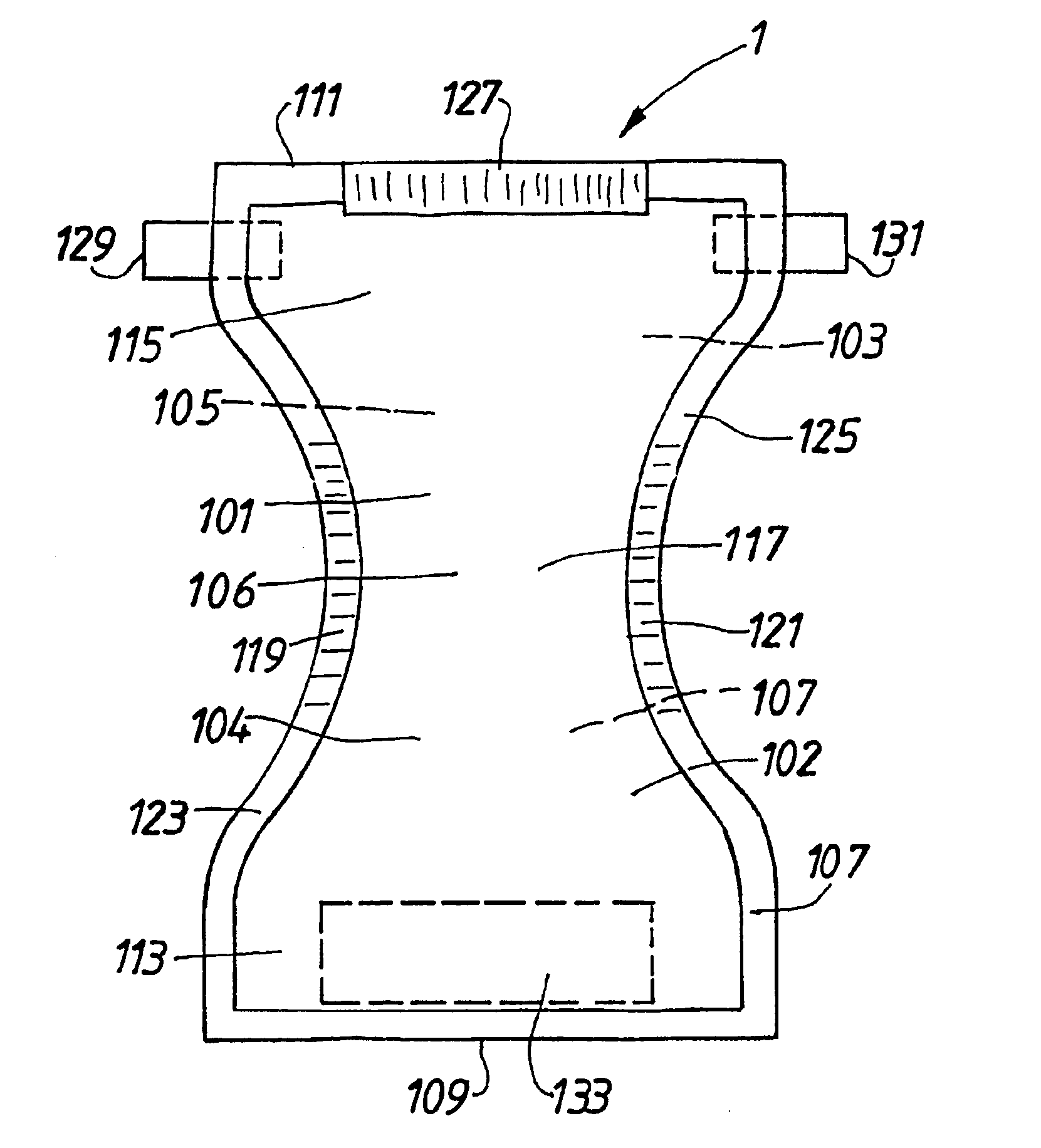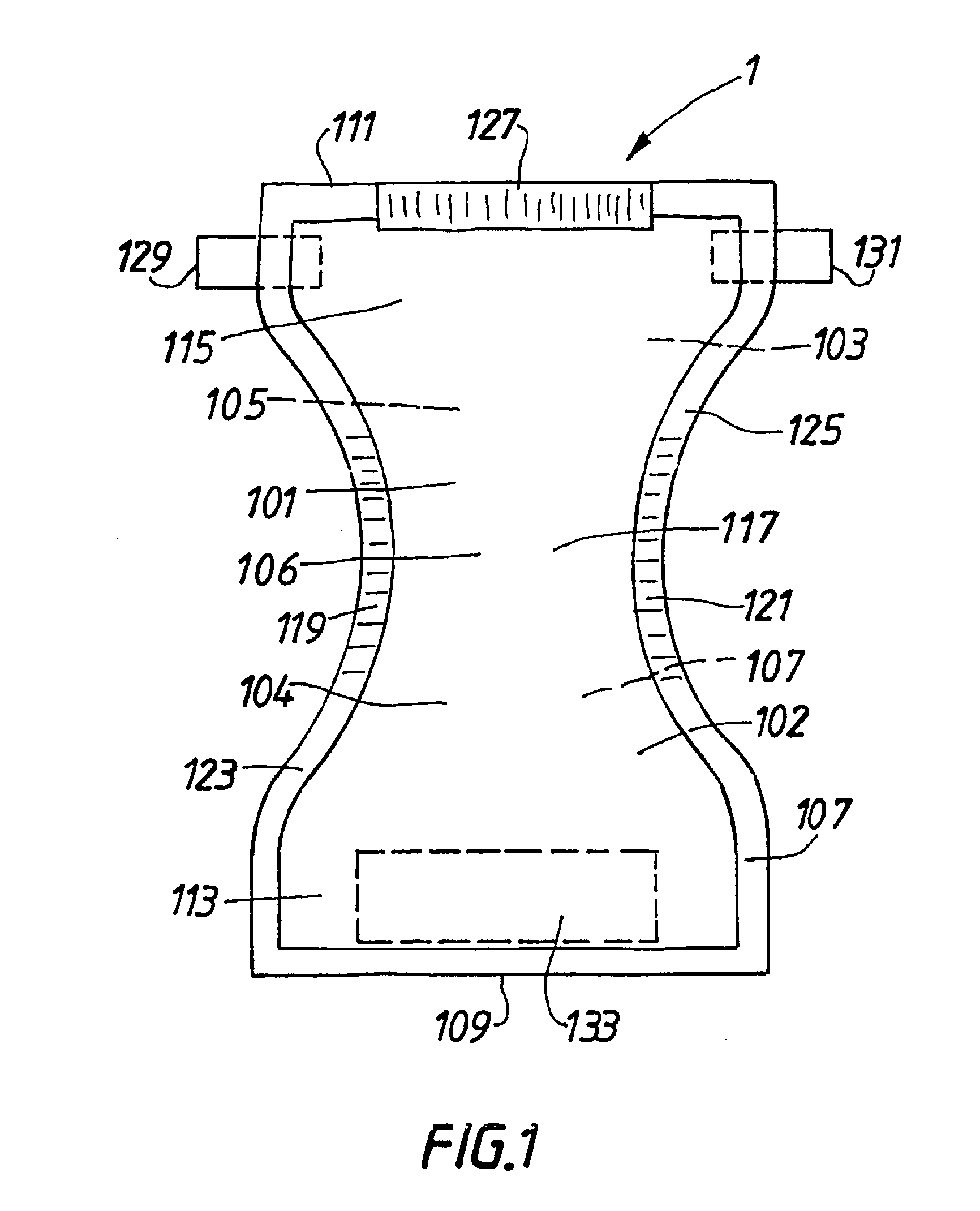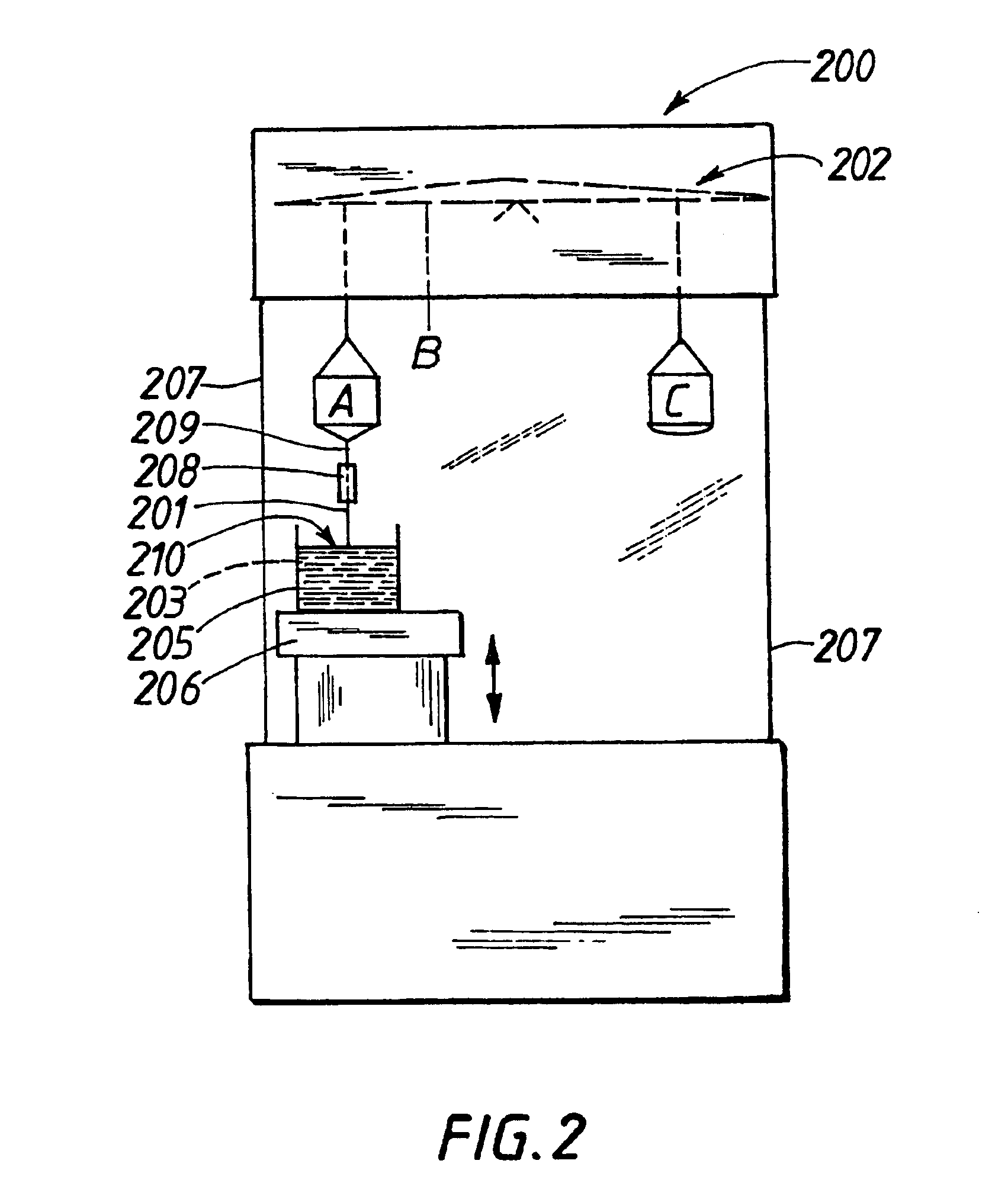Fibrous structure and absorbent article including such a fibrous structure
- Summary
- Abstract
- Description
- Claims
- Application Information
AI Technical Summary
Benefits of technology
Problems solved by technology
Method used
Image
Examples
example 1
Samples of Example 1
1a. Untreated polypropylene non-woven material.
2a. Polypropylene non-woven material which has been corona treated according to the invention to introduce polar silicon-containing groups on the surface of the material.
2b. Polypropylene non-woven material which has been washed after having been corona treated.
The operating conditions under which the samples 2a and 2b were treated according to the invention are as follows:Speed of the web=26 m / min.Width of the web=0.65 mElectrical power of corona=1690 WFlow rate of N2=94 l / min.Flow rate of N2O=0.39 l / min.Flow rate of SiH4=0.115 l / min.
The web was here treated in two steps: in a first step, corona treated under air, and in a second step, corona treated with injection of the here above described gaseous mixture.
When the material is washed, this is done by being submerged in a container with distilled water. The temperature of the distilled water is 37° C. The material is left in the water for 15 seconds and is hereafte...
example 2
Samples of Example 2
1a. polypropylene fibres from an untreated nonwoven material;
1c. after storage of the untreated non-woven material of 1a. for three months;
2a. polypropylene fibres from a non-woven material which has been corona treated according to the invention in order to introduce polar, silicon-containing groups to the surface of the material;
2b. after washing of the corona treated non-woven material in 2a;
2c. after storage of the corona treated non-woven material in 2a for five weeks (no washing);
2d. after washing and subsequent storage of the corona treated non-woven material in 2a for five weeks.
The operating conditions under which the samples 2a, 2b, 2c and 2d were treated according to the invention are as follows:Speed of the web=26 m / minWidth of the web=0.65 mElectrical power of corona=1690 WFlow rate of N2=94 l / minFlow rate of N2O=0.39 l / minFlow rate of SiH4=0.115 l / min.
The web was, in a first step, corona treated under air and in a second step, corona treated with in...
example 3
Samples of Example 3
1a. untreated polypropylene non-woven material;
2a. polypropylene nonwoven material which has been corona treated according to the invention in order to introduce polar silicon containing groups to the surface of the material;
2b. after washing of the corona treated nonwoven material of 2a.
The operating conditions under which the samples 2a and 2b were treated are as followsSpeed of the web=26 m / minWidth of the web=0.65 mElectrical power of corona=1690 WFlow rate of N2=94 l / minFlow rate of N2O=0.39 l / min.Flow rate of SiH4=0.115 l / min.
The web was, in a first step, corona treated under air and in a second step, corona treated with injection of the here above described gaseous mixture.
The material is washed by being placed in a container with distilled water. The distilled water has a temperature of 37° C. The material is left in the water for 15 seconds and is subsequently removed from the water and laid out flat to dry.
Results of example 3SampleTime (seconds)1 >3002...
PUM
| Property | Measurement | Unit |
|---|---|---|
| Adhesivity | aaaaa | aaaaa |
| Permeability | aaaaa | aaaaa |
| Hydrophilicity | aaaaa | aaaaa |
Abstract
Description
Claims
Application Information
 Login to View More
Login to View More - R&D
- Intellectual Property
- Life Sciences
- Materials
- Tech Scout
- Unparalleled Data Quality
- Higher Quality Content
- 60% Fewer Hallucinations
Browse by: Latest US Patents, China's latest patents, Technical Efficacy Thesaurus, Application Domain, Technology Topic, Popular Technical Reports.
© 2025 PatSnap. All rights reserved.Legal|Privacy policy|Modern Slavery Act Transparency Statement|Sitemap|About US| Contact US: help@patsnap.com



